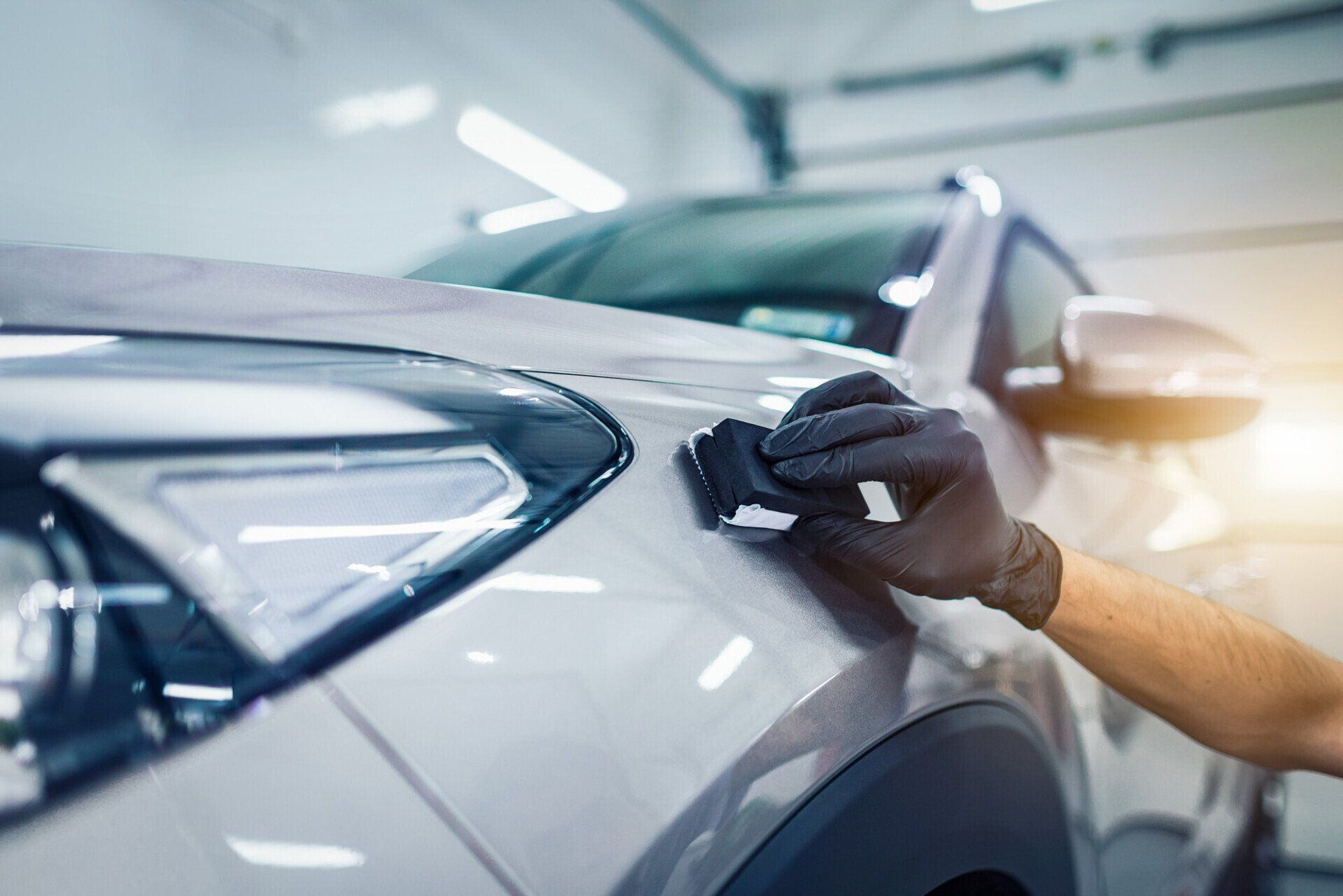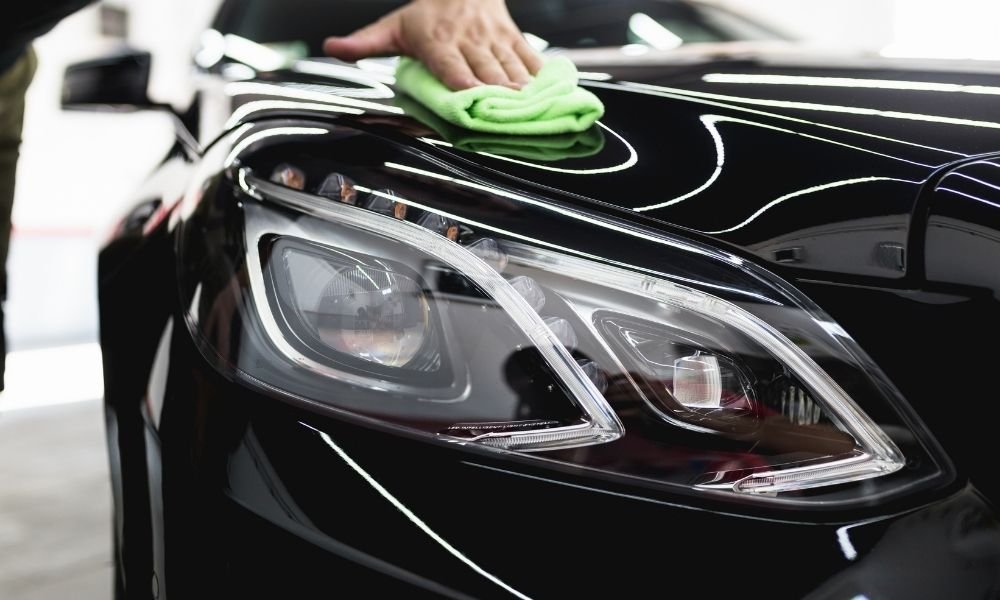Ceramic Coatings San Jose: Boost and Protect Your Automobile's End up
Ceramic Coatings San Jose: Boost and Protect Your Automobile's End up
Blog Article
Introducing the Science Behind Ceramic Coatings: Just How Does It Job and Why Is It Above Conventional Choices?
Ceramic finishings have actually been obtaining popularity in different markets for their phenomenal performance and resilience. Understanding just how ceramic layers job and why they outmatch traditional options is essential for those looking for to enhance the long life and resilience of their products.
The Chemistry of Ceramic Coatings
In understanding ceramic coatings, delving right into the complex chemistry behind their structure is essential for comprehending their capability and resilience. Ceramic layers are mostly made up of silicon dioxide (SiO2), which develops a solid and protective layer when applied to numerous surfaces. This chemical framework provides remarkable resistance to warmth, chemicals, and rust, making ceramic layers very searched for for a large range of applications.
The chemistry behind ceramic layers involves the development of covalent bonds between silicon and oxygen atoms, developing a stiff network that boosts the finishing's toughness and sturdiness. Additionally, the existence of various other elements such as zirconium, titanium, and aluminum further improves the finish's residential or commercial properties, using raised hardness and bond to surfaces.
Comprehending the chemical make-up of ceramic coverings permits the modification of solutions to suit details demands, whether it be for automobile, industrial, or domestic purposes. By using the power of chemistry, ceramic coverings remain to pave the method for premium protection and performance in various industries.
Benefits of Ceramic Coatings

An additional considerable benefit of ceramic layers is their hydrophobic nature. This home triggers water to bead up and roll off the covered surface, bring dirt and pollutants with it. Because of this, ceramic coverings make cleansing and maintaining surface areas much less complicated and much less lengthy. Ceramic finishes use enhanced color and gloss depth, providing surfaces a dynamic and glossy appearance. On the whole, the multitude of advantages offered by ceramic layers make them an exceptional alternative compared to conventional covering approaches.
How Ceramic Coatings Bond
Ceramic coverings bond to surfaces through a process that involves molecular attachment and chemical communications. When a ceramic coating is used to a surface area, it develops a strong bond by chemically sticking to the surface area at a molecular level.
Furthermore, the chemical interactions between the ceramic layer and the surface additionally improve the bond. ceramic coatings san jose. These interactions permit the ceramic layer to develop a continuous and smooth layer on the surface area, supplying outstanding defense and sturdiness. Unlike traditional finishings that may rest on the surface area without totally bonding, ceramic layers produce an irreversible bond that is immune to chemicals, UV rays, and rough ecological conditions

In significance, the bonding mechanism of ceramic layers guarantees a lasting and reliable safety layer that outmatches standard covering alternatives. This remarkable bond contributes to the longevity, scrape resistance, and longevity of ceramic layers, making them a favored selection for various applications.
Resilience of Ceramic Coatings
The phenomenal longevity of ceramic finishes stems from their durable molecular adhesion and chemical communications with surfaces, making certain a resilient safety layer that surpasses standard covering options. When applied, ceramic layers form a solid bond with the substrate, developing a durable obstacle versus various environmental stressors such as UV radiation, chemicals, and abrasions. This bond is so secure that it can endure the rigors of day-to-day usage without deteriorating or breaking down rapidly.
Unlike typical finishings that may deteriorate with time, ceramic finishes maintain their stability for a prolonged duration, giving long-lasting protection for the underlying surface area. The solid molecular framework of ceramic layers resists cracking, fading, and peeling, making sure that the surface area remains shielded and cosmetically pleasing for several years ahead. This resilience not only minimizes the demand for frequent reapplications however additionally conserves time and cash in the future. Overall, the phenomenal resilience of ceramic coverings makes them an exceptional choice for securing a wide variety of surface areas in different applications.
Ceramic Coatings Vs. Standard Choices
In comparison to traditional finish methods, ceramic coverings use a distinct mix of longevity and safety abilities that establish them apart in numerous surface area defense applications. Typical options such as wax or sealants offer a short-lived layer of defense that can put on off promptly, calling for constant reapplication. On the other hand, ceramic layers other form a solid bond with the surface area, developing a semi-permanent or irreversible barrier that is extremely resistant to abrasion, chemicals, UV rays, and extreme temperatures.
Moreover, ceramic finishings offer exceptional hydrophobic buildings contrasted to conventional coverings. The hydrophobic nature of ceramic layers causes water to grain up and roll off the surface, carrying dust and pollutants with it. This self-cleaning impact assists to maintain the surface area's sanitation and gloss for prolonged periods, lowering the requirement for regular upkeep.
Furthermore, ceramic coverings have a thicker layer compared to typical alternatives, giving improved scratch resistance and defense against small effects. This resilience guarantees durable efficiency and assists preserve the visual appeal of the dealt with surface area for an extended period.
Final Thought
Finally, the scientific research behind ceramic finishings lies in their chemical structure and bonding homes, making them above standard alternatives. The benefits of ceramic coverings consist of enhanced resilience and defense for surfaces. By recognizing how ceramic coverings job and their benefits over conventional options, one can make educated choices when considering finishing choices for numerous applications.
Unlike conventional finishes that might sit on the surface without totally bonding, useful content ceramic finishings produce a long-term bond that is immune to chemicals, UV rays, and rough environmental conditions.
The extraordinary longevity of ceramic coverings stems from their durable molecular attachment and chemical communications with surface areas, ensuring a durable protective layer that exceeds typical coating alternatives.Unlike conventional finishes that may break down over time, ceramic layers maintain their integrity for Get More Info an extensive duration, offering durable protection for the underlying surface.In comparison to traditional finishing techniques, ceramic coverings supply a distinct mix of longevity and safety capacities that set them apart in different surface protection applications. By understanding just how ceramic coatings job and their advantages over conventional options, one can make informed choices when thinking about finish choices for different applications.
Report this page